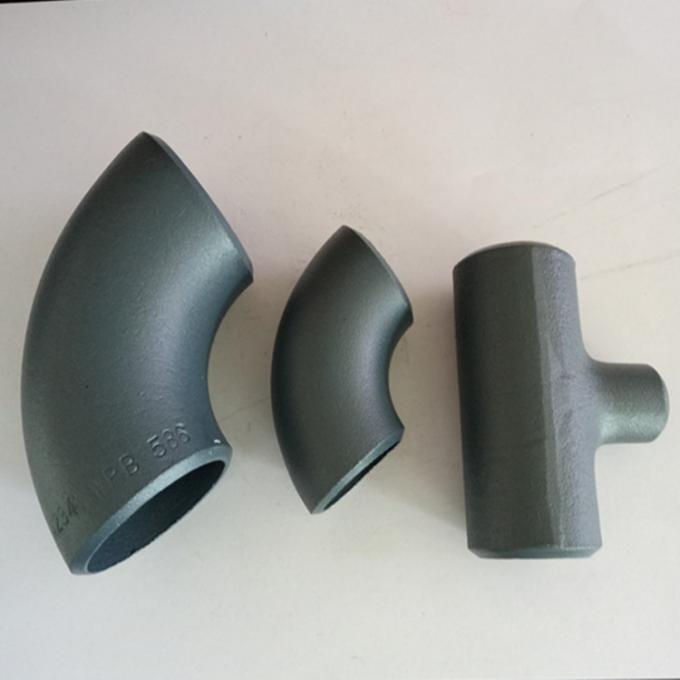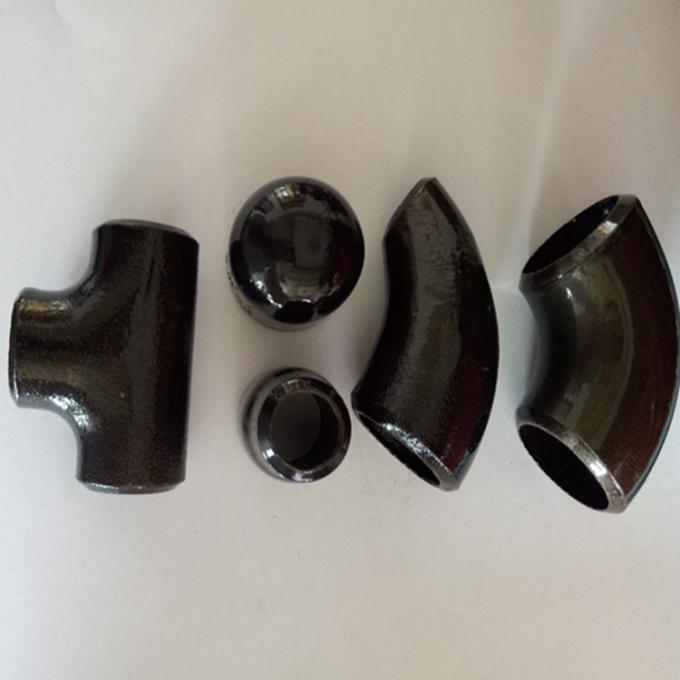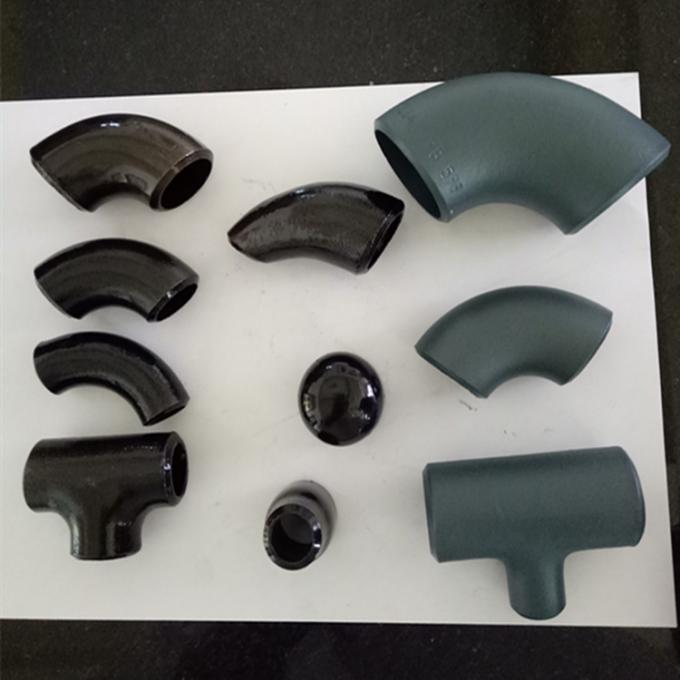Abstract
This dissertation is a detailed analysis of galvanized carbon steel butt weld sch 80 (XH) 90º elbow. It covers the types of joints, the welding processes, and the inspection of the finished product. The dissertation provides an overview of the benefits of using this type of elbow joint, including increased strength and improved corrosion resistance. Additionally, the dissertation discusses the safety concerns related to the welding process and the testing protocols that must be followed to ensure the quality of the product. The dissertation concludes with a discussion of the current trends in the use of galvanized carbon steel butt weld sch 80 (XH) 90º elbow and the potential future applications of this type of joint.
Introduction
Galvanized carbon steel butt weld sch 80 (XH) 90º elbow is a type of pipe joint used in industrial and residential plumbing applications. This type of joint is used to join two pipes at a 90 degree angle and is commonly used in water or gas lines. This type of joint provides increased strength and corrosion resistance compared to other types of pipe joints. As such, galvanized carbon steel butt weld sch 80 (XH) 90º elbow is a highly sought after product for plumbing applications.
This dissertation will provide an overview of the types of joints and welding processes used for the production of galvanized carbon steel butt weld sch 80 (XH) 90º elbow. Additionally, this dissertation will discuss the safety concerns associated with the welding process and the inspection protocols for quality control. The dissertation will conclude with a discussion of the current trends in the use of this type of elbow joint and the potential future applications of this type of joint.
Types of Joints
There are several different types of joints used to produce galvanized carbon steel butt weld sch 80 (XH) 90º elbow. The most common type of joint is a single-welded joint. In this type of joint, a single piece of metal is welded to the pipe at a 90 degree angle. This type of joint is the most economical and is often used in residential applications.
The second type of joint is a double-welded joint. In this type of joint, two pieces of metal are welded together at a 90 degree angle. This type of joint is more expensive than the single-welded joint, but provides increased strength and corrosion resistance. This type of joint is often used in industrial applications.
The third type of joint is a socket-welded joint. In this type of joint, a socket is welded to the pipe at a 90 degree angle. This type of joint is the most expensive, but provides the highest level of strength and corrosion resistance. This type of joint is often used in high-pressure applications.
Welding Process
The welding process for galvanized carbon steel butt weld sch 80 (XH) 90º elbow involves several steps. The first step is to prepare the pipe and the elbow. This involves cleaning the pipe and elbow of any dirt, debris, or corrosion. Once the pipe and elbow are clean, they must be aligned at a 90 degree angle.
The second step is to check the joint for any flaws or defects. This involves inspecting the pipe and elbow for any visual imperfections, such as cracks, dents, or gaps. If any defects are found, they must be repaired before the welding process can begin.
The third step is to apply the welding material. This involves using a welding rod to fill in any gaps between the pipe and the elbow. The welding material must be applied evenly and securely to ensure a strong joint.
The fourth step is to heat the joint. This involves using a welding torch to heat the pipe and elbow to a high temperature. The heat allows the welding material to melt and bond the pipe and elbow together.
The fifth step is to cool the joint. This involves allowing the joint to cool to room temperature before the welding process can be completed.
The final step is to inspect the joint. This involves inspecting the joint for any flaws or defects. If any defects are found, they must be repaired before the joint can be used.
Safety Concerns
The welding process for galvanized carbon steel butt weld sch 80 (XH) 90º elbow involves several safety concerns. The most common safety concern is the risk of fire and burns. The welding torch used in the process produces extreme heat, which can cause fires and burns if proper safety precautions are not taken.
The second safety concern is the risk of electric shock. The welding process involves the use of electricity, which can cause electric shock if proper safety precautions are not taken.
The third safety concern is the risk of breathing in welding fumes. The welding process produces hazardous fumes that can be inhaled if proper safety precautions are not taken.
Inspection and Testing
The inspection and testing process for galvanized carbon steel butt weld sch 80 (XH) 90º elbow involves several steps. The first step is to inspect the joint for any flaws or defects. This involves visually inspecting the joint for any cracks, dents, or gaps. If any defects are found, they must be repaired before the joint can be used.
The second step is to perform a pressure test. This involves using a pressure gauge to check the joint for any leaks or weak points. If any leaks or weak points are found, they must be repaired before the joint can be used.
The third step is to perform a non-destructive testing. This involves using a device to check the joint for any cracks or other flaws without damaging the joint. If any flaws are found, they must be repaired before the joint can be used.
The fourth step is to perform a visual inspection. This involves using a microscope or magnifying glass to check the joint for any visual imperfections. If any imperfections are found, they must be repaired before the joint can be used.
Benefits
There are several benefits of using galvanized carbon steel butt weld sch 80 (XH) 90º elbow. The most notable benefit is increased strength and corrosion resistance. This type of joint provides a strong, durable connection between two pipes that is resistant to corrosion. Additionally, this type of joint is easy to install and requires minimal maintenance.
Another benefit of this type of joint is improved safety. The welding process for this type of joint is relatively safe and does not require the use of hazardous materials or tools. Additionally, this type of joint is designed to withstand high pressures and temperatures, which reduces the risk of failure or leaks.
Finally, this type of joint is cost-effective. The cost of producing this type of joint is relatively low, making it an ideal option for residential and commercial applications.
Current Trends
The use of galvanized carbon steel butt weld sch 80 (XH) 90º elbow has increased in recent years due to its increased strength and corrosion resistance. This type of joint is now commonly used in industrial, commercial, and residential applications for water and gas lines.
Additionally, this type of joint is now being used in a variety of different industries, such as automotive, aerospace, and plumbing. This is due to its increased strength and corrosion resistance, as well as its cost-effectiveness.
Future Applications
The future applications of galvanized carbon steel butt weld sch 80 (XH) 90º elbow are limitless. This type of joint is becoming increasingly popular due to its increased strength and corrosion resistance. Additionally, this type of joint can be used in a variety of different industries, including automotive, aerospace, and plumbing.
Furthermore, this type of joint can be used in a variety of different applications, such as water and gas lines, transmission lines, and exhaust systems. This type of joint can also be used to join two pipes at any angle, making it an ideal option for a variety of applications.
Conclusion
Galvanized carbon steel butt weld sch 80 (XH) 90º elbow is a type of joint used in industrial, commercial, and residential plumbing applications. This type of joint provides increased strength and corrosion resistance compared to other types of pipe joints. Additionally, this type of joint is cost-effective and requires minimal maintenance.
The welding process for this type of joint involves several steps, including preparing the pipe and elbow, applying welding material, heating the joint, cooling the joint, and inspecting the joint. Additionally, there are several safety concerns associated with this type of joint, including the risk of fire and electric shock.
The inspection and testing process for this type of joint involves several steps, including inspecting the joint for any flaws or defects, performing a pressure test, performing a non-destructive test, and performing a visual inspection.
The use of this type of joint has increased in recent years due to its increased strength and corrosion resistance. Additionally, this type of joint is now being used in a variety of different industries, such as automotive, aerospace, and plumbing.
Finally, the potential future applications of this type of joint are limitless. This type of joint can be used in a variety of different applications, such as water and gas lines, transmission lines, and exhaust systems. Additionally, this type of joint can be used to join two pipes at any angle, making it an ideal option for a variety of applications.

Products Description:
| ype | Carbon Steel Pipe Fitting Elbow |
| Size | Seamless Elbow:1/2″~24″ DN15~DN600 Welded Elbow: 1/2″~72″ DN15~DN1800 |
| Wall thickness | sch10, sch20, sch30, std, sch40, sch60, xs, sch80, sch100, sch120, sch140, sch160, xxs, std,sch5s, sch20s, sch40s, sch80s |
| Standards | ANSI B16.9, ASME,DIN2506, JIS, BS,GOST |
| Material | Carbon steel: ASTM/ASME A234 WPB,WPC, ST37-2,ST54 Alloy steel: ASTM/ASME A234 WP9-WP12-WP11-WP22-WP5-WP91 Stainless steel: ASTM/ASME A403 WP 304-304L, WP 316-316L,WP 321,201 |
| Surface treatment | Transparent oil, rust-proof black oil or hot galvanized |
| Packing | wooden case, pallet or as customers’ requirement |
| Applications | Petroleum, chemical, power, gas, metallurgy, shipbuilding, construction, etc |
| Min order | 1 piece |
| Delivery time | 7 after receipt of advanced payment |
| Certification | ASME, ISO9001:2000 |
| Delivery Term | FOB(30% down payment in advance, the balance before shipment) CIF or C&F(30% in advance , the balance against with the copy of B/L) |
Product Pictures:








